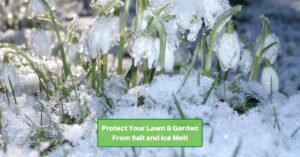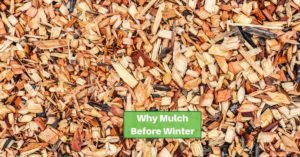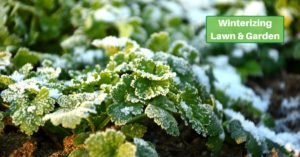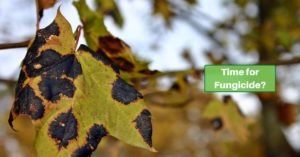We hope you find our articles useful, but you might expect this one to be about a bunch of sh–. And yes, solid animal waste can often be a great fertilizer! But commercially-available fertilizer is designed for the job.
Going natural has some advantages. But choosing a product that’s made to feed your lawn can guarantee that your lawn gets all the nutrients it needs. It can keep it healthy and beautiful.
But understanding what those chemical nutrients are might be tough. So let’s look at the three main elements that your grass needs.
Goals Of Using Fertilizer
Of course, everyone knows what fertilizer is for – it’s to keep your lawn healthy! But there’s more to it than simply having some rich green blades sticking up.
Those blades won’t last long if the whole plant isn’t healthy, of course. That means you need to concern yourself not just with the blade, but also with the roots. You also have to worry about what’s below the surface and the overall health of the plant.
In short, fertilizer isn’t intended for the short term. The right fertilizer will keep your grass strong over time. Yes, you’ll have to keep feeding the lawn, but using the right formulation will keep your grass strong no matter the weather and year after year.
In most cases, lawn fertilizer has to be applied at least twice a year. After all, it’s food for your plants! It’s important to spread fertilizer at the right time and in the right way, but let’s get into more specifics about this gardening need.
The Components Of Fertilizer – Or, What Is NPK?
Grass thrives when it has access to enough of three chemicals: nitrogen, phosphorus, and potassium. And any bag of commercial fertilizer will list the amount of these three on their bags.
Nitrogen (chemical symbol N) keeps the glade of the grass strong. It also provides what’s needed to keep a vibrant green color.
Phosphorus (chemical symbol P), on the other hand, fortifies the roots. They will grow deeper and wider. That gives them more access to water and helps make sure nutrients can reach the blade.
Finally, potassium (chemical symbol K) provides an all-around boost to your grass’s health. It helps fight off disease and mold. And it strengthens the plant overall.
In some countries outside of Canada and the USA, sulfur (S) is also included in the measurements. So you may see an NPKS number on your package.
Every bag of fertilizer will be marked with a ratio in the format N:P:K. Each will be a number. If you need a little math refresher, these numbers describe the ratio of one element to another. 2:2:2 means 2 – or equal – parts of each. On the other hand, 5:2:5 means five parts nitrogen, two parts phosphorus, and 5 parts potassium.
All things being equal, you want to look for a balanced mix. A formula like 10-10-10 or 5-5-5 is ideal – if your soil is already at equal levels. But ideally, you should test the soil to see if any of these elements are in short supply.
For instance, your soil test kit may show that you’re fine on phosphorus and potassium. But maybe the lawn is short on nitrogen. In that case, you want a fertilizer with a higher first number. Perhaps 3:2:2 would be best, or even 5:2:2.
There’s no “one size fits all” solution for a type of grass or any other plant. The goal is to treat your soil to get it to the right levels. Some plants may thrive with more of one chemical than the others, but you have to coax the soil to that level. So concentrate on your soil test first!
Fast Acting vs. Slow Release
Some fertilizers release their chemicals quickly. These are great for restoring a lawn that’s badly out of balance. It can also bring new life to a sickly lawn in time for a special event or an open house.
Slow-release fertilizers might get you more bang for your buck, though. They allow the chemicals to be absorbed into the soil (and then into your grass) over an extended period. That means the lawn can stay stronger over both the summer and the winter.
Granular, Soluble, or Organic
Granular fertilizers come as small pellets. They can be fast- or slow-release. These are probably the most common fertilizers. You can spread them by hand, but it might be easier to use a seed spreader.
There are also water-soluble fertilizers that you “spray” onto your lawn as you water it. These are fast-release products. They’ll work into the soil and provide a quick boost.
Of course, there are also organic fertilizers. You could buy these commercially or even from a farm. But you could also make them at home through composting! While animal waste can work, you will get a better blend of chemicals through compost.
Conclusion
Grass needs food, too, and it’s important to feed it what it craves! Be sure to test your soil regularly to see what chemicals are needed. Choose a lawn fertilizer that will restore the right balance of nitrogen, phosphorus, and potassium. Once you do that, you’ll have a beautiful, healthy lawn throughout the season and from year to year!









